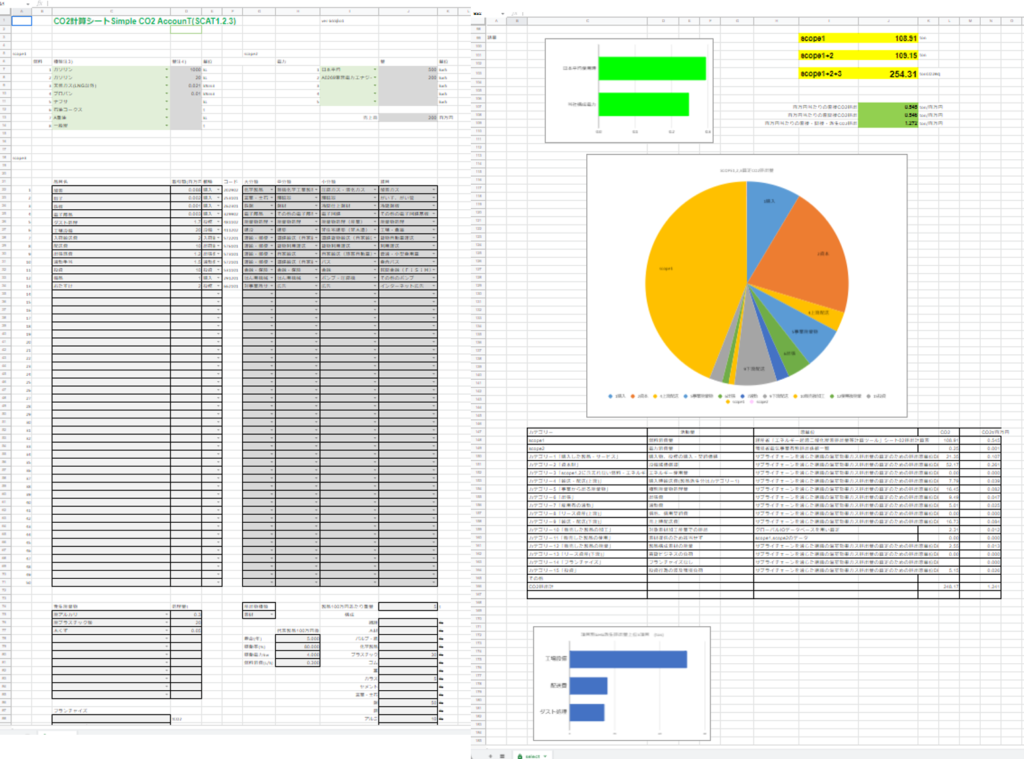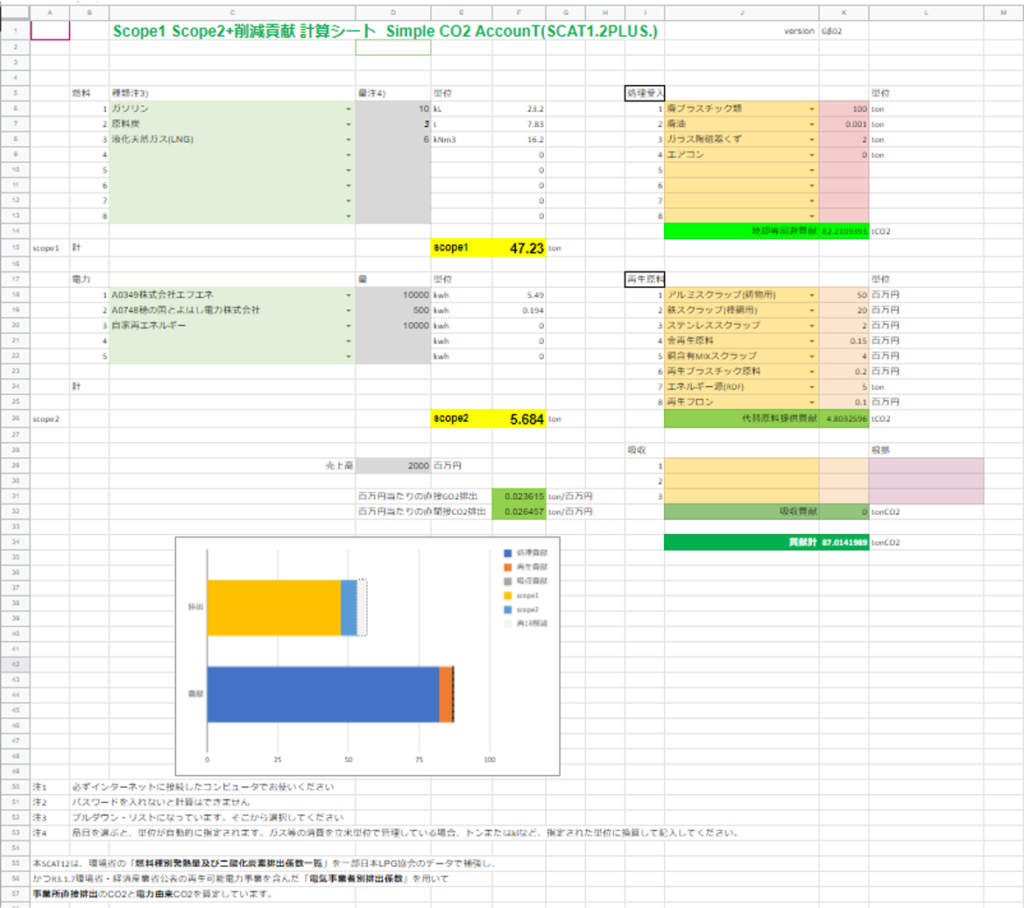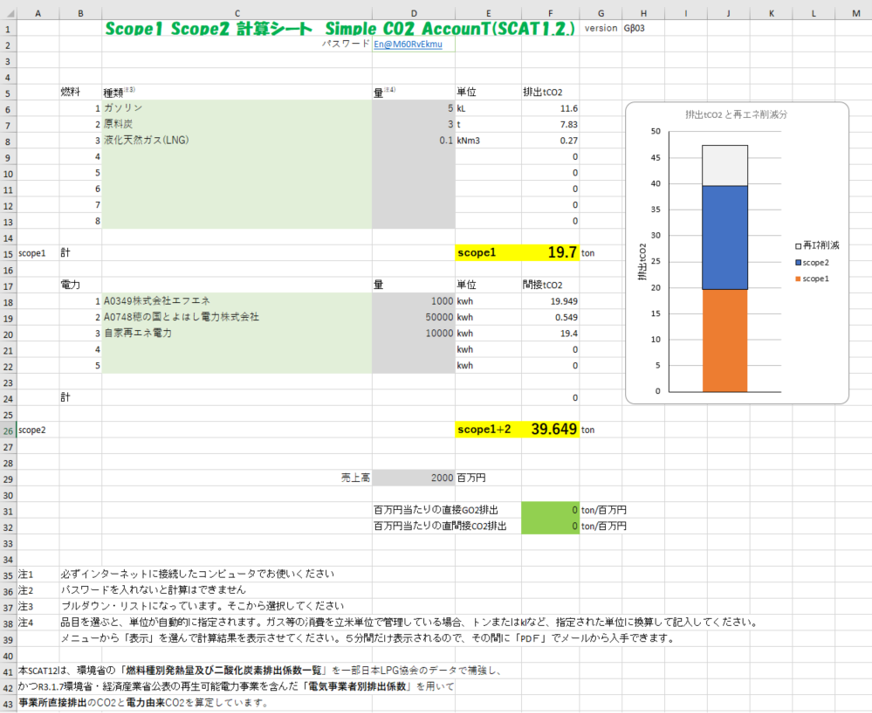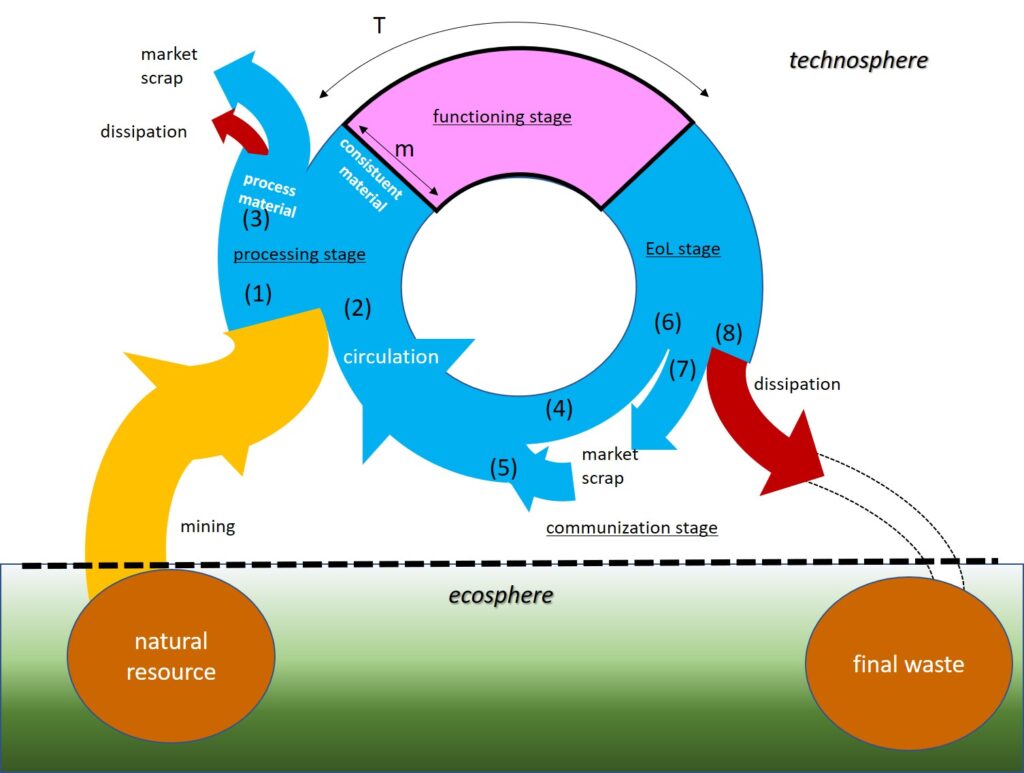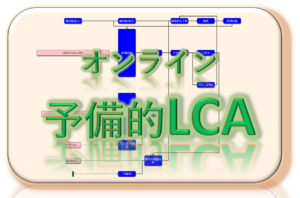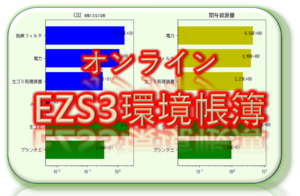The Excel sheet for calculation of TMR and TCFP
The sheet consists of “element name J” and “configuration name K” and data from L to AH, where all elements forming the system are described.
Element” is a superordinate concept of “configuration. In other words, the substances and processes required to form an “element” become the “configuration name,” and are described one line after another, starting from the line following the element. This “composition” then becomes an “element,” and the next level of “composition” is created.
The “composition” is given a final quantity N, which is the quantity required for the unit of the element (element quantity L). This value is not directly input, but is given as a value in the range of Q below and R above. This is because the amount of substances and other materials fed into the process is not firm, and there is a range of values. In some cases, it is not possible to give a range of values, in which case only the lower Q is used. The quantity O is a single numerical value obtained by taking the synergistic average of the lower Q and the upper R. In addition, some inputs, such as organic solvents and water, are circulated, in which case the circulation rate % is entered in the circulation rate S, so that the circulation loss can be reflected in the final amount N as the amount used. In the “Composition” field, only the composition name K, lower Q, upper R, and circulation rate S are entered, while upper R and circulation rate S may be omitted.
The “Element Name” is automatically generated from the “Configuration” by the automatic generation mechanism described below, except for the first one (for the CFP). When an “Element Name” is generated, it must first be checked to see if it is in an existing database. If the CFP for the element is available from an existing database, the value is entered into the “CO2 intensity (AD)” field, and a 1 is placed in the Q column to complete the input for this “element.
If there is no existing database, first enter the standard amount of the element that will be the unit of composition in columns Q, (and R if there is a range). The unit of measure should be consistent only between this element and the underlying composition, and there is no need to worry about the relationship with other elements.
If it is not in the database, the energy input of the process is first entered in the “Element” row, where Q is the standard charge of the element as described above. The same as in the case of quantity O, the electricity quantity T and the fuel quantity Y are put into U, V and AA, AB with an upper and lower range, and then unified by taking a synergistic average. The case of the generated CO2(AC) is the case where there is a CO2 generation other than combustion. Note that soil and stone (AE,AF,AG) are not relevant in this case, as they are prepared for calculations that also include resource efficiency.
Composition number H is a number assigned to a “composition,” and the same number is automatically assigned when there are identical composition names. The reference element line F indicates the number of the “element” of the “configuration” corresponding to the line, and represents a hierarchical structure in which a “configuration” becomes an “element” based on this number and gives birth to another child “configuration.
The upper element line E is the line number of the “element” to which the “configuration” belongs.
The next element line D is the line number where the next element in the sequence appears. This allows the “Calculation” sheet to calculate the sum of the “configurations” belonging to that “element”.
The maximum number C is to represent the maximum number up to the current line as a reference in order to give the “configuration number” H for a new “configuration”.
Element number A is the number of the element.
These are calculation systems that are automatically generated whenever a new “configuration” is written to the line below an “element” that is not in the database at the end of the “configuration” and automatically add a new “element” corresponding to the “configuration,” and the actual total is also calculated using this data, especially the “reference element line” F. The actual accumulation is calculated using this data, in particular, the “reference element row” F.
The overall TCFP calculation results are represented in two rows of column AS ({CFP}), which is the sum of the CO2 generation calculated from the sum of the electricity sources (column AQ) and the CO2 amount from fuel and other (non combustion, intensity) (column CP2FP AR).
=AQ2*fuel!D$15+AR2
The power FP (AQ column) is the part that accumulates power. This calculation is different for “elements” and “configurations. In the case of an “element,” the power footprint of the “element” is the sum of the power input in the process of the “element” plus the power footprint of the “configuration” included in the “element” multiplied by the configuration quantity N, which is then divided by the unit L of the “element” to obtain the power footprint of the “element. In other words, by calling up the power footprint of this “element” in the hierarchy above it and multiplying it by the “configuration amount” as the “configuration” in that hierarchy, the power footprint for that configuration is the cough of the configuration amount, and it becomes a minute of the calculation for the “element” in the hierarchy above it. In other words,
=IF(AZ2<>””,AH2*(T2+IF(AZ2>ROW()+1,SUM(AQ3:INDIRECT(“AQ”&AZ2-1))),0))/L2,M2*INDIRECT(“AQ”&BB2))
Here, the “Next Element Row D”, “Upper Element Row E”, and “Reference Element Row F” from the “Input” sheet are copied here, respectively.
AR(CO2FP) is the same calculation for fuel generated CO2, generated CO2, and specific CO2.
=IF(AZ2<>””,AH2*(W2+AC2+AD2+IF(AZ2>(ROW()+1),SUM(AR3:INDIRECT(“AR”&AZ2-1)),0))/L2,M2*INDIRECT(“AR”&BB2))
A similar calculation is performed for TMR in the AT to AV column. BQ to BS are the intermediate TCFPs and TMRs obtained in the course of this calculation, which can be incorporated into the database and used for future calculations.


